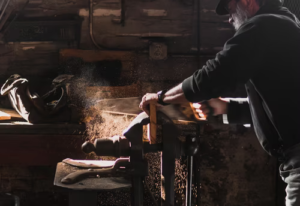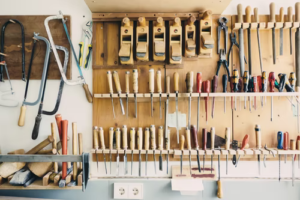
Woodworking is a hard and usually time-consuming job. It can wear you down if you are constantly working, but there are many ways that you can relieve this pressure by just implementing some aspects in your workplace. Here are some tips on how to be more efficient and thus make it easier for yourself.
- Safety Comes First
Woodworking is one of the safest and most pleasurable activities you can engage in, as long as you follow a few simple safety regulations. These woodworking safety regulations are common sense and are meant to be easy to remember. Failure to follow the safety standards, however, might result in catastrophic harm. The workshop is not a place for sloppiness. It’s a great place to learn and practice proper safety behaviors, which will make woodworking more pleasant. You need to wear the appropriate clothes, anything that might slow down your reaction time or impair your judgment should be avoided. Before replacing blades or parts on your power tools, always remember to disconnect the power supply and many others. You may also need to purchase a lift truck for sale to make it easier for you to carry large and heavy pieces of wood.
- Think About the Flow
The first step is to think about is how a piece of wood travels from the minute it enters your store. This will lead you through almost all of your future shop layout options. Tools that perform comparable duties or are often used in the same order should be kept close together. The jointer/planer/table saw trio is one of the most prominent groups. Because these three tools will be used repeatedly during the milling process, it’s a good idea to keep the distance between them as small as possible. You should also think about the endurance of the things that you constantly use, for example, if you had a quality soft close drawer slide it would help you in the sense that you would know that it will slowly close itself no matter if you close it a bit too hard due to haste. You should store your tools close to the workstation because that’s where you’ll use them the most.
- Keep It Clean

The important thing to remember is that an untidy store is made up of two elements: dust/shavings and clutter. When attempting to determine how to preserve a cleaner shop, these are some factors to consider. The remedies for dust are more difficult to implement since they generally need more manpower and equipment. At the very least, you should aim to work your way up to a dust collecting system. Place a cyclone separator in front of the source to capture the dust. Use a shop vac to connect your tiny portable power tools, and be sure to use a filter bag. Also, don’t be afraid to use the shop vac daily. Make it a habit to run it for a few minutes every day at the end of the day. Yes, we know you’re exhausted, but cleaning while you’re already dirty and sweaty is preferable to entering into a filthy atmosphere the following morning when you’re clean and eager to start your day.
- Keep the Tools Sharp
Chisels, blades, planes, scrapers, and gouges are examples of dull tools that do not cut smoothly. They rip the wood fibers, leaving a fuzzy, uneven, and unprofessional appearance. If a chisel is to perform successfully, it must have a sharp edge that is free of nicks. However, this edge is easily damaged when thrown in a toolbox for work outside of the business. You may construct edge covers for each of your chisels instead of utilizing a huge tool roll. Grinding is required for tools that have been chipped or nicked. You may use a bench grinder, wet grinder, or even a belt sander. After grinding, honing can be done with a flat wet stone or an oil stone. When dealing with fine wood, a moist stone is ideal. Polishing with a fine wet stone, a stropping wheel, or leather is the final stage. Woodworking is made easier, more efficient, and safer using tools with sharper blades.
- Lighting
Pay close attention to the lighting. All work locations should have constant and adequate lighting so that you may work from any angle without producing shadows. This provides both safety and efficiency.
Consider:
- Lighting from above
- Lighting that is focused
- On-tool lights
The light can be diffused by painting the walls and the ceiling white.
- Take Care of Your Tools
If you take care of your tools, they will take care of you. Any home improvement or repair project is made easier, safer, and more effective with proper care and frequent maintenance of your hand and power equipment. Tool maintenance also saves you money since the more cared for they are, the longer they will last.
Hopefully, these tips will help you with your woodwork and make it easier to do your job adequately.
If you need any wood equipments or tools, you can check online and see varieties of products like Size Chart for Pilot Holes that can be use when drilling wood screws and others.







